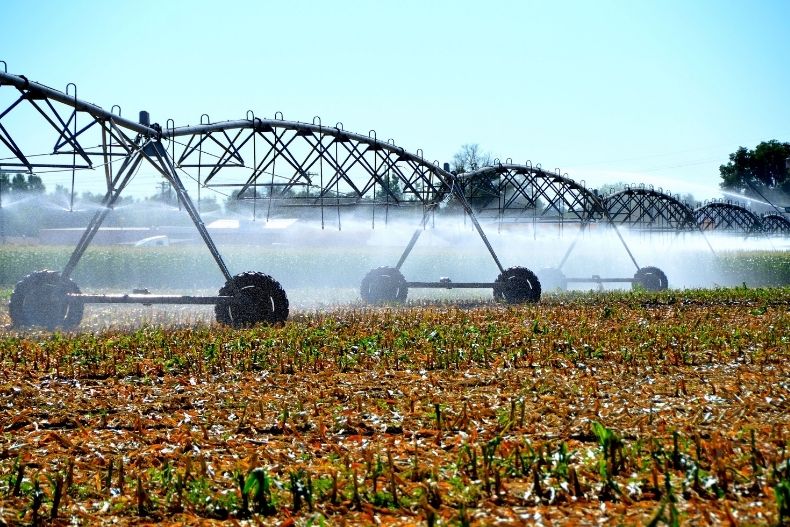Water is essential to the survival of any plant. Although some plants can survive for long periods without water, they all need it eventually. The problem is there is a big difference between watering a few houseplants and keeping an eye on the plants in your garden.
From the moment summer arrives water is likely to be in short supply. In other words, you need an effective way of supplying your plants with water artificially.
Fortunately, there are several options worth considering.

- Center Pivot Irrigation
In essence, this is a metal hose that connects several sprinklers together. However, the entire apparatus is on wheels, allowing it to move in a circle around the central point.
The central point is static and usually where the water supply connects. The water is collected from a nearby water source or you may need to drill a borehole into the soil until you find water. This should give you a constant supply allowing you to water your plants morning and evening.
The fact that the center pivot design can move means that you can easily water a field without needing to do anything.
- Manually
At the other end of the scale is the manual irrigation technique. In effect, this is watering the plants by hand. That is bearable if you are doing a small garden but not so appreciated or practical for large spaces. The common approach is to use a hosepipe connected to the mains, although if you are just doing a mall yard you can use a watering can.
- The Traveling Irrigator
If you have several areas that need to be watered then one of the most economical solutions is traveling irrigators. These can be connected to any water supply and will pump water out the top of the unit using a water cannon. It can cover a surprisingly large surface area. More importantly, the traveling irrigator is on wheels.
This allows you to move it from field to field and water everything in succession for a minimal cost.
- Sprinklers
Many people opt to use sprinklers. These are effective pieces of pipe with small holes in them. The water moves through the pipe at high pressure and small amounts come out of the holes, spraying across the nearby crops. It can also be set to flow out of the pipe holes, staying close to ground level.
This type of system is static as the pipes need to be laid before the plants start growing.
- Flood Irrigation
It is possible to flood the plant area by having channels that carry water across the area. The water is collected at the end of each channel and recycled, allowing it to be pumped around again. It’s an environmentally friendly way of watering as there is minimal water wastage and your plants constantly have the water they need.
You can choose any, or even all, of these systems and ensure your plants have the water they need. They are all easy to install and need surprisingly little maintenance.











